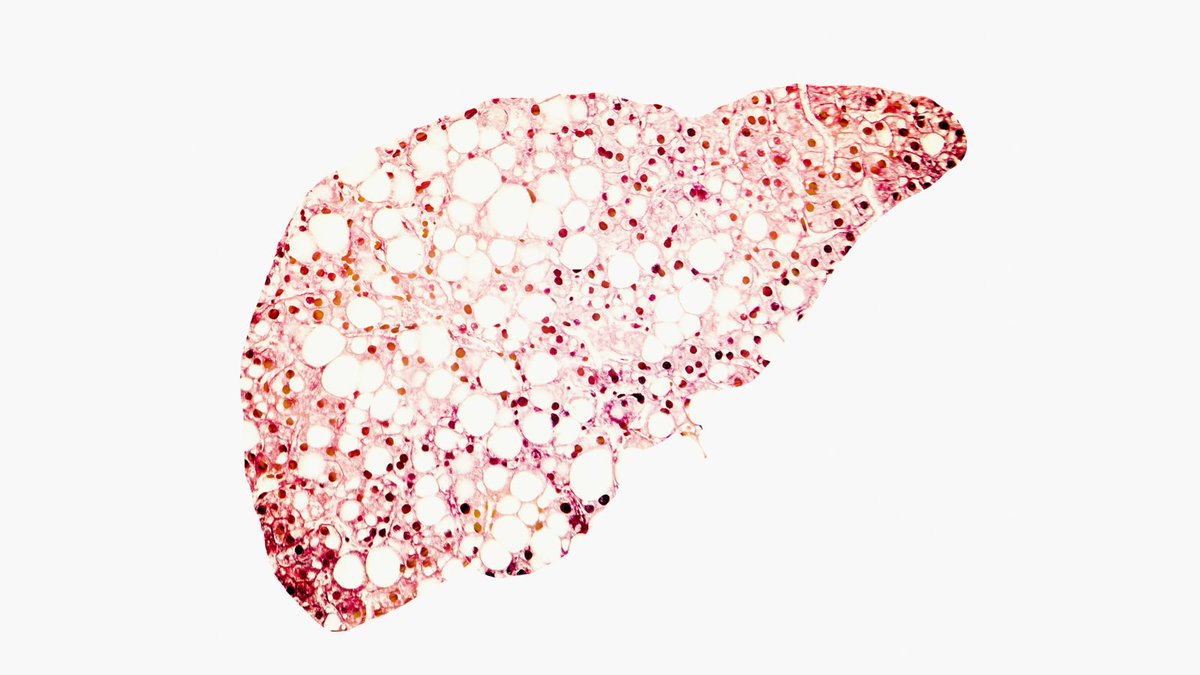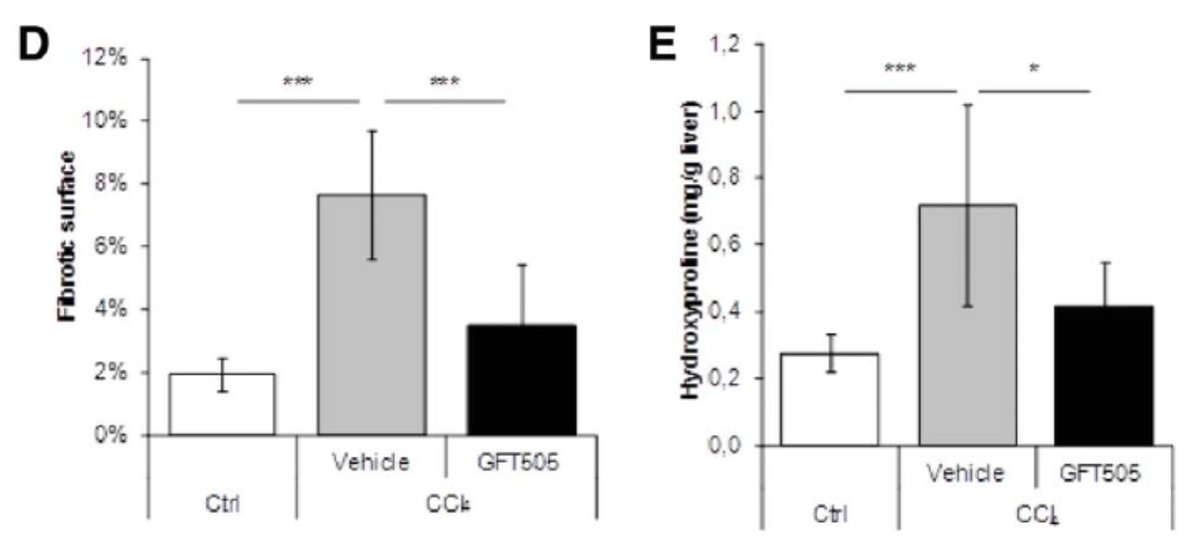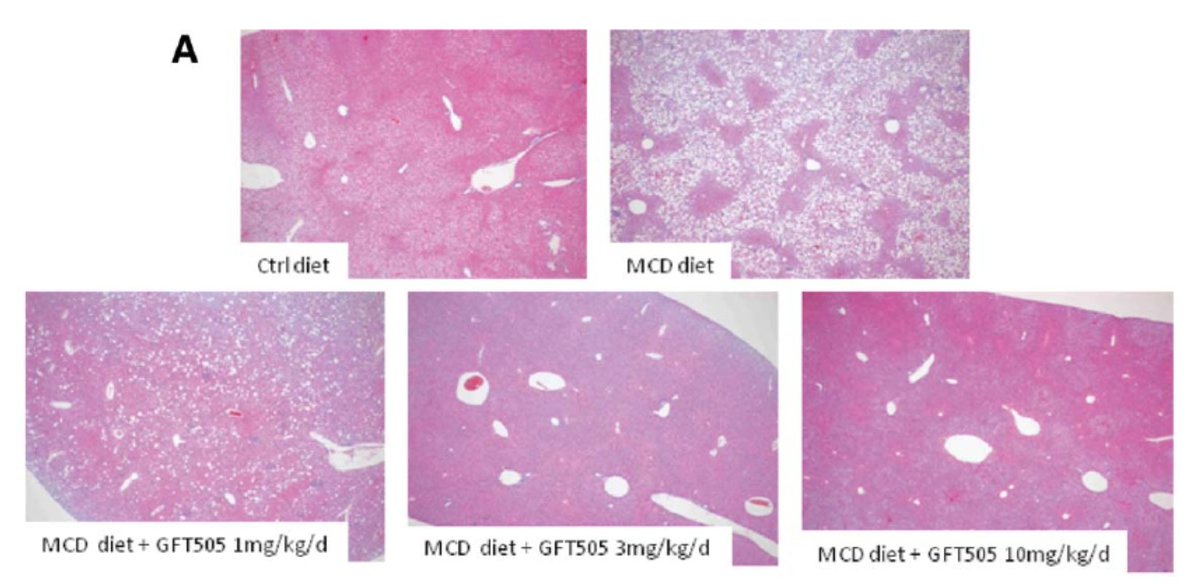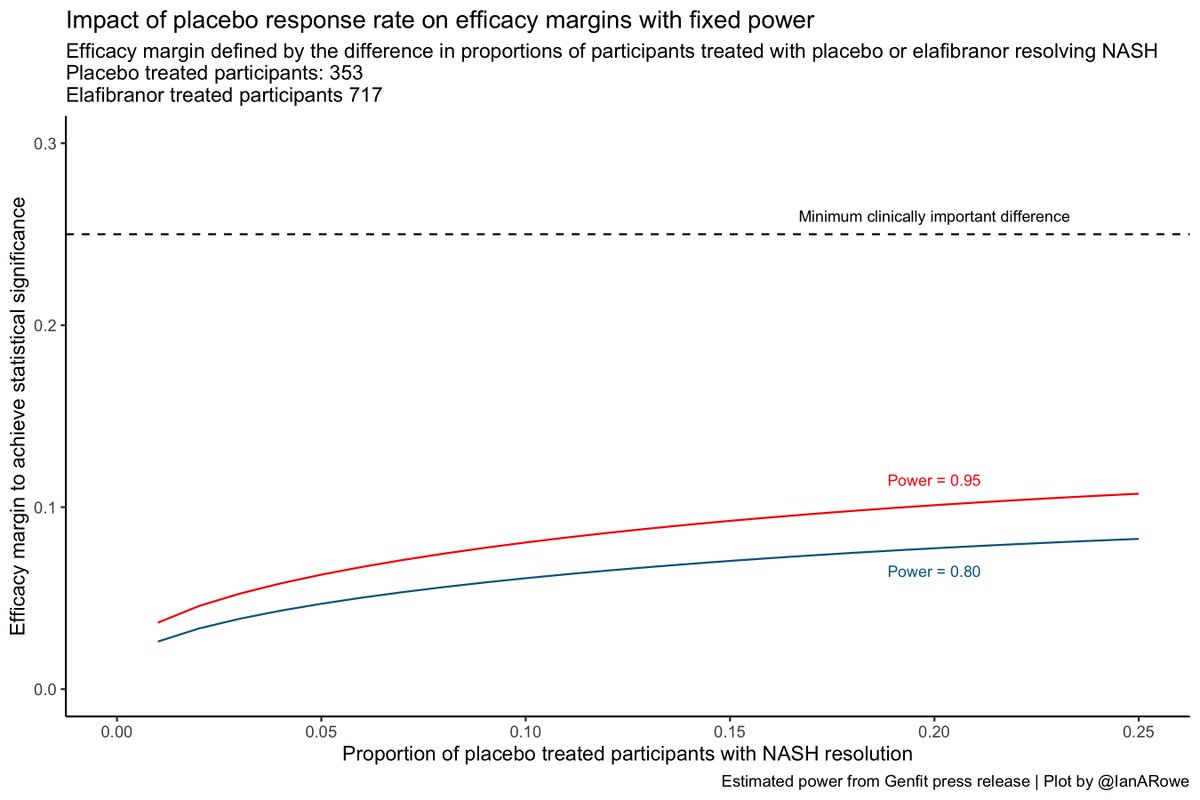What can patients with #NASH expect from clinical trials?
Recent negative results from $GILD and now $GNFT in Phase 3 highlight the uncertainties entering trials that patients face
Is there a minimum potential benefit a patient should accept when entering a trial?
THREAD
Recent negative results from $GILD and now $GNFT in Phase 3 highlight the uncertainties entering trials that patients face
Is there a minimum potential benefit a patient should accept when entering a trial?
THREAD
In Phase 3, participants with #NASH entering a trial there is no certainty that the drug being tested will work and they are taking a risk with a new treatment
Is there a minimum threshold for benefit in a trial that participants might expect?
2/n
Is there a minimum threshold for benefit in a trial that participants might expect?
2/n
Earlier today, I asked #livertwitter what the minimally important difference would be for histologic improvement in phase 3 trials in NASH
The majority thought that at least a 25% absolute improvement in either NASH or fibrosis was the minimum
https://twitter.com/IanARowe/status/1260484524670103552?s=20
3/n">https://twitter.com/IanARowe/...
The majority thought that at least a 25% absolute improvement in either NASH or fibrosis was the minimum
https://twitter.com/IanARowe/status/1260484524670103552?s=20
3/n">https://twitter.com/IanARowe/...
To see how that might compare, first let& #39;s think about how a drug for #NASH gets to phase 3
We can focus on elafibranor since it provides a clear translational path from preclinical studies to early phase trials and then into phase 3
4/n
We can focus on elafibranor since it provides a clear translational path from preclinical studies to early phase trials and then into phase 3
4/n
In pre-clinical models, elafibranor was reported to have strong effects on both elements of #NASH in dietary models and also on fibrosis in a CCL4 model
https://aasldpubs.onlinelibrary.wiley.com/doi/epdf/10.1002/hep.26461
This">https://aasldpubs.onlinelibrary.wiley.com/doi/epdf/... was enough to move into patients and the GOLDEN-505 trial
5/n
https://aasldpubs.onlinelibrary.wiley.com/doi/epdf/10.1002/hep.26461
This">https://aasldpubs.onlinelibrary.wiley.com/doi/epdf/... was enough to move into patients and the GOLDEN-505 trial
5/n
GOLDEN-505 was highly anticipated and recruited quickly
The endpoints in trials at this time were evolving and the authors presented the original and revised endpoints, focusing on a subgroup of patients with the most active NASH
https://www.gastrojournal.org/article/S0016-5085(16)00140-2/fulltext
6/n">https://www.gastrojournal.org/article/S...
The endpoints in trials at this time were evolving and the authors presented the original and revised endpoints, focusing on a subgroup of patients with the most active NASH
https://www.gastrojournal.org/article/S0016-5085(16)00140-2/fulltext
6/n">https://www.gastrojournal.org/article/S...
There were concerns raised about whether this trial supported a phase 3 trial, particularly from industry commentators (e.g. @JacobPlieth and @adamfeuerstein)
7/n
7/n
The positive predictive value for trials like this is often low, despite a statistically significant result
For instance, in the landmark piece from John Ioannidis, "Why most published research findings are false", the PPV for a true effect is <50%
http://doi.org/10.1371/journal.pmed.0020124
8/n">https://doi.org/10.1371/j...
For instance, in the landmark piece from John Ioannidis, "Why most published research findings are false", the PPV for a true effect is <50%
http://doi.org/10.1371/journal.pmed.0020124
8/n">https://doi.org/10.1371/j...
Despite this, a decision was made to proceed and the press release from earlier this week brought further disappointment to patients with #NASH in need of treatment
https://ir.genfit.com/news-releases/news-release-details/genfit-announces-results-interim-analysis-resolve-it-phase-3
9/n">https://ir.genfit.com/news-rele...
https://ir.genfit.com/news-releases/news-release-details/genfit-announces-results-interim-analysis-resolve-it-phase-3
9/n">https://ir.genfit.com/news-rele...
So what can we learn from the RESOLVE-IT trial?
The press release gives us some insights into the study design, and importantly the efficacy margin that was planned for
Without seeing the protocol and power calculation we can only estimate, but the margin is narrow
10/n
The press release gives us some insights into the study design, and importantly the efficacy margin that was planned for
Without seeing the protocol and power calculation we can only estimate, but the margin is narrow
10/n
At typical rates of NASH resolution, e.g. 10%, the efficacy margin was 6-8%
This means only 1 in 14 participants would see that benefit of treatment
11/n
This means only 1 in 14 participants would see that benefit of treatment
11/n
Some commentators, and $GNFT themselves have postulated that the high placebo response rate has impacted on the outcomes
Whilst the efficacy margin does increase with the placebo response to maintain power, this doesn& #39;t explain the lack of effect observed in the trial
12/n
Whilst the efficacy margin does increase with the placebo response to maintain power, this doesn& #39;t explain the lack of effect observed in the trial
12/n
So, where do we go from here and what are the lessons for patients with #NASH?
1. Efficacy margins in phase 3 deserve attention
2. Placebo response rates don& #39;t have a major impact on efficacy margins
3. Animal models don& #39;t necessarily predict clinical efficacy
13/n
1. Efficacy margins in phase 3 deserve attention
2. Placebo response rates don& #39;t have a major impact on efficacy margins
3. Animal models don& #39;t necessarily predict clinical efficacy
13/n
Participation of patients in clinical trials is critical to the development of new treatments - can we define what is the minimum benefit that might be acceptable?
It will depend on the severity of disease and what alternatives are available
14/n
It will depend on the severity of disease and what alternatives are available
14/n
Decisions to participate, or indeed to progress a trial to phase 3, are difficult when the outcome measures themselves are uncertain
Histologic surrogates from phase 2 are hard to interpret but with time this will become clearer as clinical events occur in ongoing studies
15/n
Histologic surrogates from phase 2 are hard to interpret but with time this will become clearer as clinical events occur in ongoing studies
15/n
So, can a minimum potential benefit be defined for trials in #NASH?
How might it differ for patients with and without cirrhosis?
How can it best be measured?
ENDS
How might it differ for patients with and without cirrhosis?
How can it best be measured?
ENDS

 Read on Twitter
Read on Twitter






